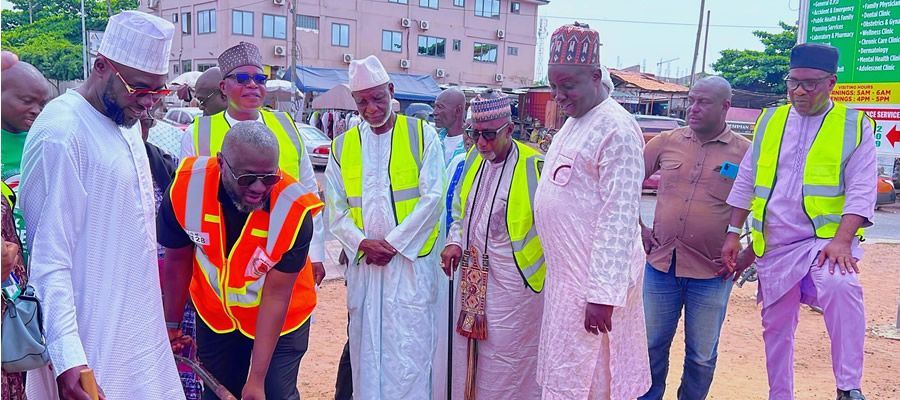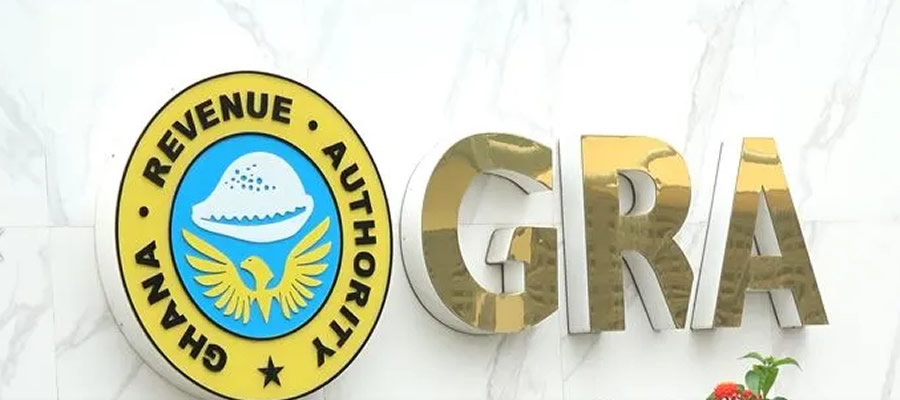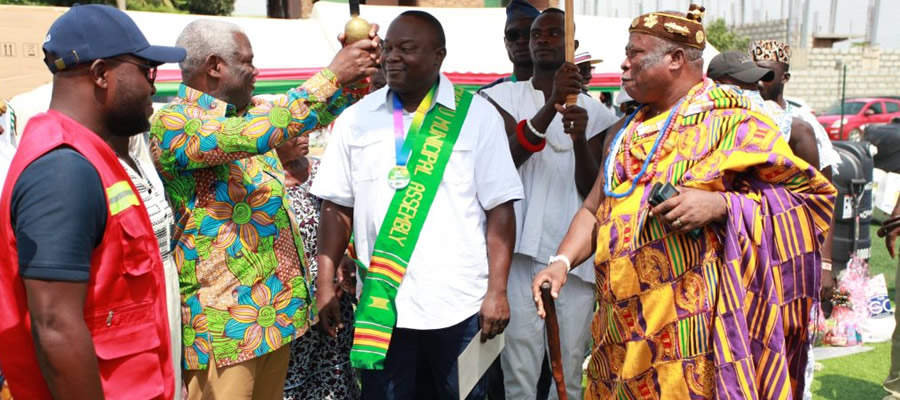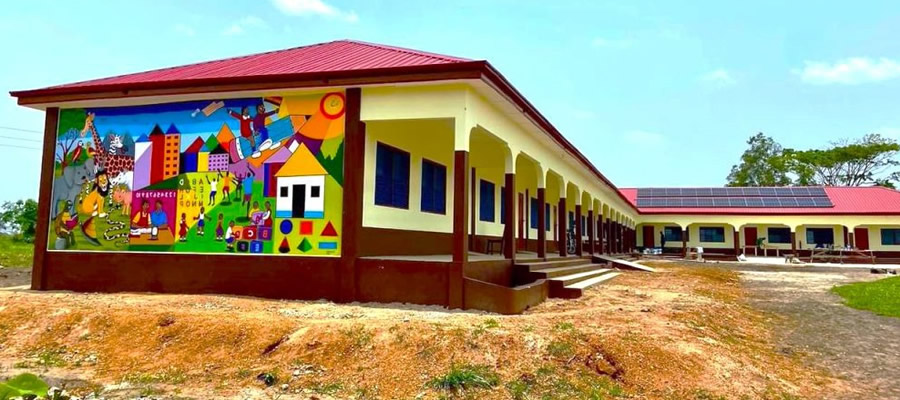
Main Source Of Drinking Water
The main source of drinking water in the region for 80.9 per cent of households is pipe borne water, either inside or outside the house. At the district level, while 90.7 per cent of households in AMA and 85.9 per cent in Tema have this facility available to them, this does not seem to be the case in Ga (57.6%), Dangme West (64.2%) and Dangme East (24.4%).
In all districts, it is more common for households to access pipe borne water from outside than from inside the house. It is noted that water tanker supply is prominent in Ga (19.2%) and Dangme East (21.2%). The main source of drinking water for Dangme East is the well (29.5%). It is also the district with a high proportion of households whose main source of drinking water is dugout (13.3).
Toilet Facility
In general, households in the region use mainly public toilet facility (27.0%) or water closet in their houses (22.1%). In the AMA, Dangme West and Dangme East, the use of public toilet facility exceeds that of the use of the water closet in houses. While the public toilet is the most widely used in the AMA (32.7%), a large proportion of households in Dangme East (53.1%) and Dangme West (43.8%) have no toilet facility and use the bush, beach or the field. Households in Dangme West (20.9%) use pit latrines as a second choice, while those in Dangme East (15.7%), use public toilet as the second choice.
The toilet facility that is widely used by households in Ga (30.8%) is the pit latrine. About a fifth (18.3%) of households have no toilet facility of any kind and an equal proportion use water closet in their houses. In the Tema district, however, the use of the water closets in the house (29.2%) is close to that of the public toilet (27.5%) and the proportion for households with no toilet facility (16.9%) is not too different from that in Ga (18.3%). While the Kumasi ventilated improved pit (KVIP) is common in both AMA (11.7%) and Ga (11.6%), the use of bucket or pan as a toilet facility is more common in AMA than in any other district.
Even though there is a plan that is almost 20 years old to phase out the use of pan toilets in AMA and bye-laws for all new dwellings to convert to either water closet or in-house KVIP, AMA has a very high proportion (12.7%) of households still using the bucket/pan toilet system, with all its attendant problems of inefficient collection and disposal. AMA has to have the political will to enforce its own byelaws, not only on the toilet facilities, but also on environmental and sanitation issues.
Bathing Facility
For the region as a whole, two bathing facilities are most widely used: own bathroom for exclusive use (28%) and the shared open cubicle (27%). At the district level, about 30 per cent of households in AMA and Dangme East mostly use shared open cubicle, which is the most predominant bathing facility. About 29 per cent of households in AMA and about 20 per cent of households in Dangme East have access to shared bathroom, which is the second most commonly used facility.
The exclusive use of bathroom by households is predominant in Tema (37.1%). However, most households in Ga (29.8%), AMA (25.4%) and Dangme West (23.8%) also use their own bathroom exclusively. Aside this, similar proportions of households in the Tema municipality (24.4%) and Dangme West (23.1%) share a bathroom with others. The high proportion of households in Tema with exclusive use of bathroom may be due to the fact that most houses in Tema were planned and constructed by the Tema Development Corporation, which ensured modern standards in housing construction.
Liquid Waste Disposal
Liquid waste is produced as a result of cooking, bathing and washing, among others. If it is not properly disposed of it could lead to a lot of health hazards such as malaria, cholera which could bring social and economic problems to the people. Disposing of liquid waste into gutters is the most widely used method (38.9%) in the region. In the AMA, over half of the households dispose of their liquid waste into gutters, while almost a third of households in Tema also use this method.
In the more rural districts of Ga, Dangme East and Dangme West, over half of the households throw their liquid waste unto the compound in their houses. Another 32.8 per cent of households in Dangme West and 41.3 per cent in Dangme East also throw their liquid waste onto the street. The best way of disposing of liquid waste, however, is the use of the sewerage system. In the Tema municipality 27.6 per cent of households use the sewerage system. This is because the modern Tema Township has a sewerage system. The use of the sewerage system in Dangme West (1.5%) and Dangme East (0.9%) is relatively low.
Solid Waste Disposal
Solid waste can also be a health hazard if not properly disposed of. Over half of households in the region dispose of solid waste at a public dump. Disposal of solid waste at a public dump is by far the most widely used method in all the districts except Dangme East. Top on the list is the AMA, where over 60 per cent of households use this method. Burning of solid waste as a method of disposal is the most widely used method in Dangme East and the second for households in Ga. In Dangme West, 32.8 per cent of households dump their solid waste elsewhere.
The introduction of waste management systems where vehicles are used to collect waste from households for disposal has also gained popularity in the region, as about 20 per cent of households in the region use this method. In Tema, close to a third of households use this method, while about 20 per cent of households in the AMA also have their waste collected. A very small proportion of households in both Dangme East and Dangme West patronize the collection of solid waste from households.
Date Created : 11/29/2017 3:42:48 AM












 facebook
facebook
 twitter
twitter
 Youtube
Youtube
 +233 593 831 280
+233 593 831 280 0800 430 430
0800 430 430 GPS: GE-231-4383
GPS: GE-231-4383 info@ghanadistricts.com
info@ghanadistricts.com Box GP1044, Accra, Ghana
Box GP1044, Accra, Ghana